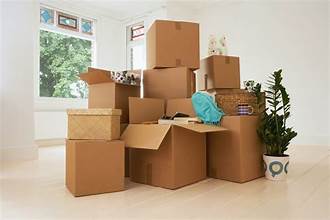Let’s not forget, on this green quest of ours, even something as small as selecting better packaging options can have an impact. Believe it or not, selecting the right type of cardboard box for your needs can significantly impact your carbon footprint. Diving into the impact, even the smallest decision can make on keeping our environment green might surprise you.
The Importance of Material ChoiceUnderstanding Cardboard Composition
Cardboard boxes are predominantly made from corrugated fiberboard, which not only contributes to their strength and flexibility but also makes them recyclable and biodegradable. This material consists of a central fluted corrugated sheet sandwiched between one or two flat linerboards. The corrugated design provides a sturdy yet lightweight structure, crucial for reducing shipping weight and, subsequently, transportation emissions.
Recycled Content Matters
Choosing boxes with a high percentage of recycled content is an effective strategy for enhancing sustainability efforts:
- Energy Savings: The production of recycled cardboard consumes about 25% less energy compared to manufacturing new, virgin cardboard. This significant reduction is due to bypassing the energy-intensive pulping process required to extract raw fibers from wood.
- Conservation of Natural Resources: Using recycled fibers reduces the demand for virgin wood pulp, thus conserving forests and reducing the impact on natural habitats. It also means less water is used during production, which is another critical environmental saving.
- Reduction of Waste: By recycling cardboard, the amount of waste sent to landfills is considerably reduced. This not only helps manage waste more effectively but also decreases methane emissions from decomposing paper products.
How Material Choice Affects the Environment
Selecting the right type of cardboard for your needs goes beyond simple functionality. Here are the broader environmental impacts:
- Lower Transportation Emissions: The lightweight nature of corrugated cardboard means it adds minimal weight to transported goods. This is crucial in reducing the fuel consumption and CO2 emissions of shipping vehicles, be they trucks, ships, or planes.
- Extended Lifecycle: Corrugated cardboard’s durability ensures it can be reused several times before recycling, extending its life cycle and reducing the need to produce new boxes. For instance, an online bookstore might reuse boxes returned by customers for outgoing shipments, effectively halving the demand for new packaging materials.
- Encouraging Sustainable Practices: By opting for cardboard made from recycled materials, businesses and consumers send a powerful message to manufacturers about the market demand for sustainable products, thereby encouraging more environmentally friendly practices throughout the industry.
Size and Fit: Less Is MoreRight Sizing Your Packaging
One common oversight is using boxes that are too large for the items being shipped. Not only does this require more filler material (which often ends up as waste), but it also increases the box’s weight and volume, leading to higher transportation emissions. Tailoring the box size to fit your product snugly can reduce these unnecessary impacts.
Anecdotal Evidence
Imagine receiving a tiny item delivered in a colossal box. Not only is it frustrating to dispose of such disproportionate packaging, but the extra space in the truck or plane needed to transport this inefficiency also adds unnecessary emissions to our atmosphere.
Production and Processing EfficiencyEnergy Consumption in Production
The process of producing cardboard involves several energy-intensive steps, each contributing significantly to overall carbon emissions. Traditional manufacturing techniques have not only been resource-heavy but also inefficient in terms of energy use. Here’s how advancements in this field are making a difference:
- Introduction of Energy-Efficient Machines: Modern production facilities have started adopting machines that use less energy and reduce waste. These advancements can decrease energy consumption by a notable margin compared to older models.
- Optimization of Manufacturing Processes: Many manufacturers are now optimizing their processes to use energy more efficiently. This includes everything from reducing the heat required during production to using renewable energy sources like solar or wind power to operate machinery.
- Adoption of Lean Manufacturing Principles: By adopting lean manufacturing techniques, factories can minimize waste throughout the production process. This not only reduces the amount of raw materials used but also lowers energy consumption by streamlining operations.
- Impact of Technological Innovations: Innovations such as automated sorting and recycling systems in factories help reclaim materials more efficiently, further reducing the need for new materials and saving energy.
Disposal and Recycling: Closing the LoopRecyclability of Cardboard
After its useful life, cardboard can be broken down and recycled into new products. The recycling process for cardboard requires significantly less energy compared to creating new cardboard from raw materials, which helps conserve energy and reduce landfill waste.
Encouraging Recycling Practices
Educating customers on how to properly dispose of cardboard packaging can further enhance its lifecycle sustainability. Simple instructions on breaking down boxes and sorting them into the right recycling bins can significantly increase recycling rates.
Your Role as a Consumer
Every purchase decision is a chance to vote for the kind of world you want to live in. By choosing environmentally friendly packaging, you are making a statement about the importance of sustainability. This doesn’t just apply to individuals; businesses can also make a huge impact by opting for greener packaging solutions for their products.
Elevate Your Packaging with The Boxery
At The Boxery, we’re all about recognizing how crucial your choice of packaging is to sustainability efforts. We’ve got a wide array of corrugated cardboard boxes that aren’t just tough and dependable—they’re also crafted with a high percentage of recycled content. It’s all about hitting two birds with one stone here – protecting both your goods and giving the environment a helping hand.
Explore our collection where each package solution is crafted just for you, making Earth’s health a priority too. Fancy learning a tad more on the subject? Drop by The Boxery’s website.
Let’s not forget that choosing the ideal cardboard box goes beyond just matching dimensions—it taps into understanding its birth-to-disposal story, aiming for environmental friendliness at every step. Every smart choice you make nudges us a bit further towards a more sustainable world, one box at a time.



